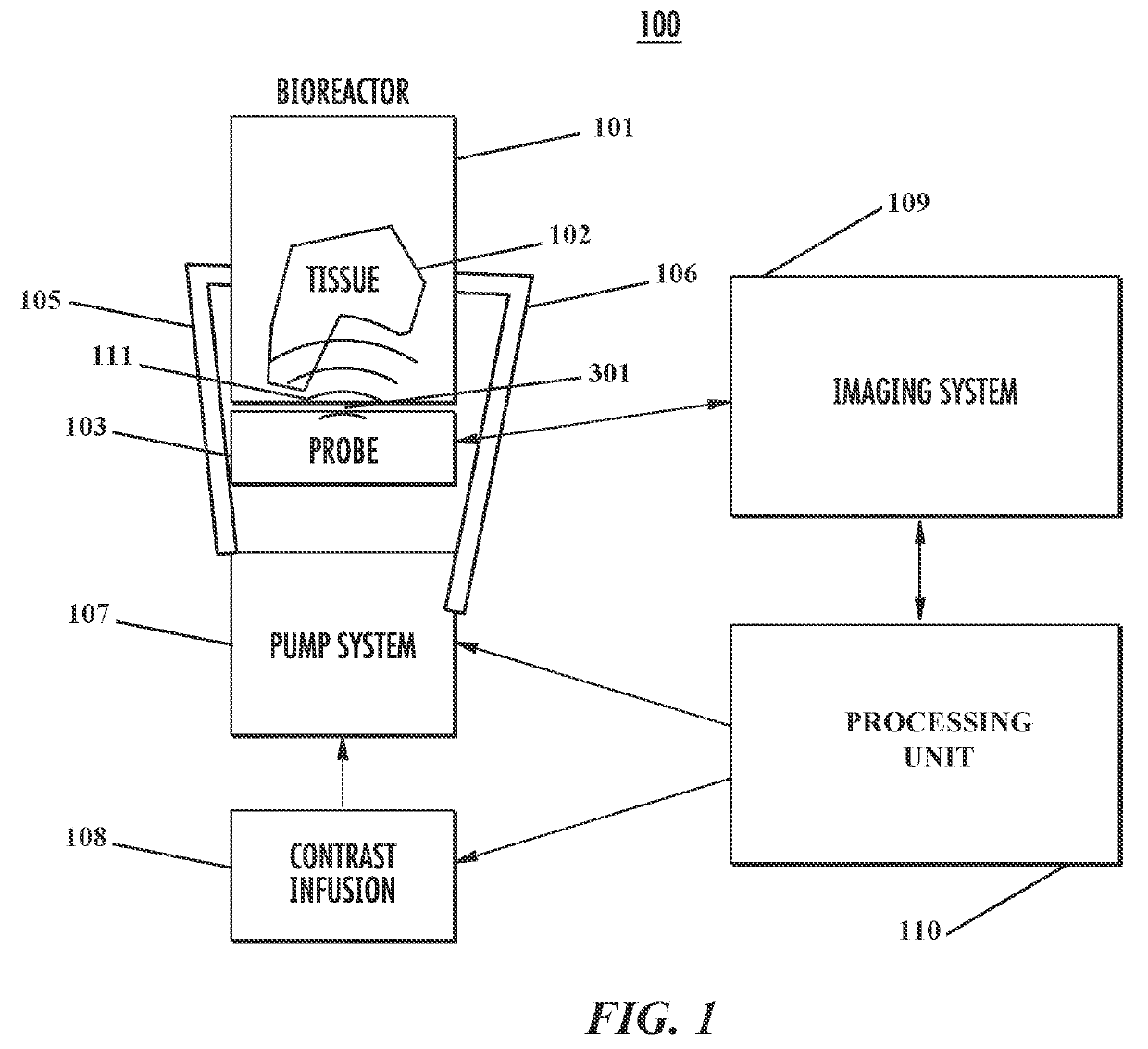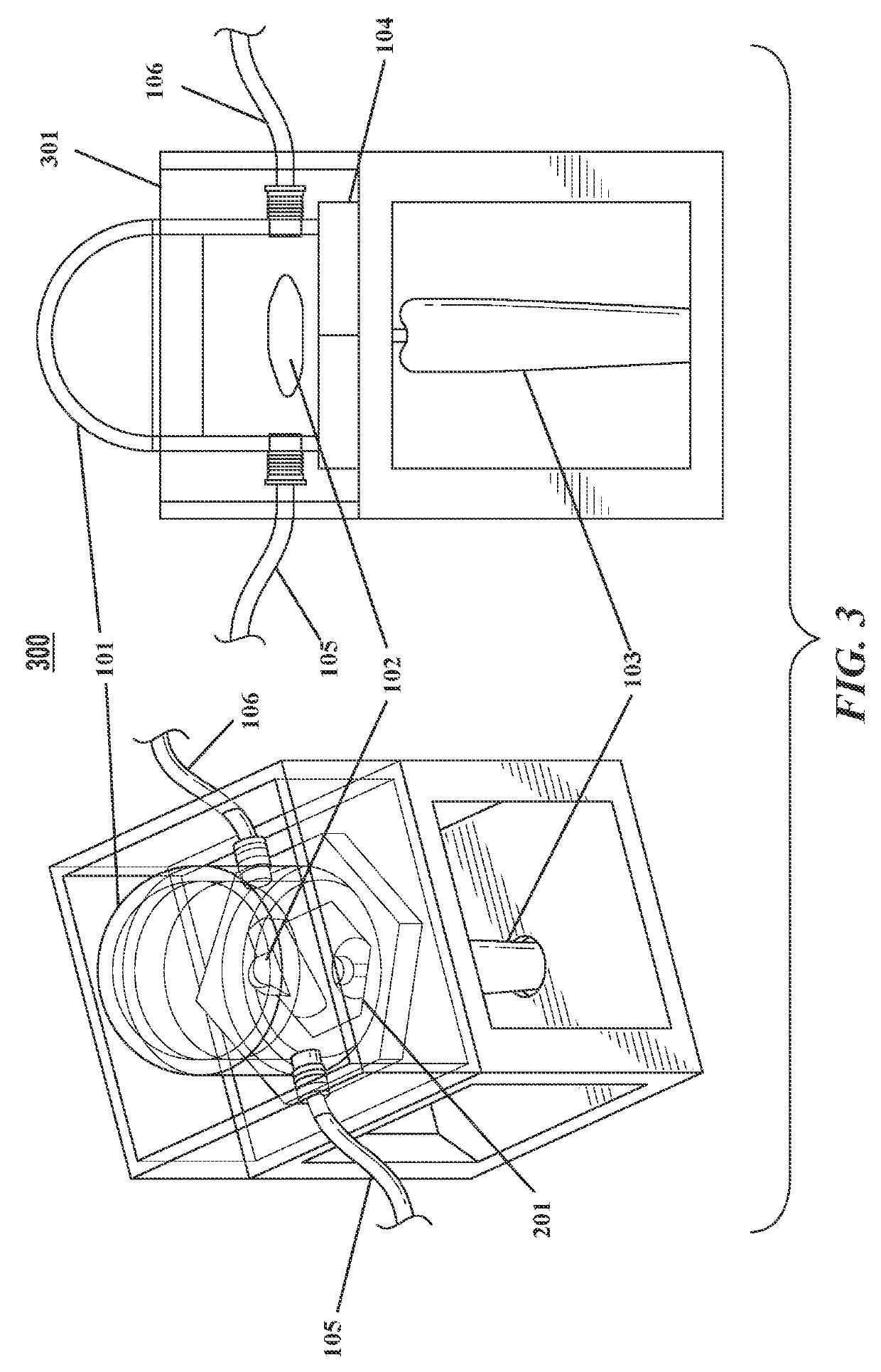System and method for noninvasively assessing bioengineered organs
a bioengineered organ and non-invasive technology, applied in the field of systems and methods for non-invasively evaluating engineered tissues and organs, can solve the problems of preventing the use of many optical imaging techniques, human livers can easily exceed the thickness of 5 cm, and organoids developing in bioreactors typically lack mechanisms to repair dna damage caused
- Summary
- Abstract
- Description
- Claims
- Application Information
AI Technical Summary
Benefits of technology
Problems solved by technology
Method used
Image
Examples
example 1
Ultrasound can be Used to Image Decellularized Liver Scaffolds
[0118]Livers were harvested from Wistar rats and decellularized following standard techniques. Multiple imaging protocols were tested on decellularized scaffolds including: flash replenishment imaging using an Acuson Sequoia 512 (Siemens Medical Solutions USA Inc, Mountain View, Calif.) and 15L8 transducer to measure perfusion time; acoustic angiography using a Visualsonics Vevo770 (Toronto. Ontario, Canada) and prototype dual-frequency transducer to obtain vessel morphology maps; and high-resolution B-mode imaging at 30 MHz with a Vevo770 for anatomical images. All three imaging modes were performed with ultrasound transducers coupled to linear motion stages to capture 3D volumetric data. Acoustic angiography and perfusion imaging revealed patent vasculature in the scaffold as evidenced by the delayed peak time of the organ perfusion curve, thereby demonstrating the power of noninvasive imaging of organ constructs.
example 2
Targeted Microbubbles can be Used to Visualize Specific Cells in 3D
[0119]Following intravenous injection, molecularly targeted microbubbles bearing one or more targeting ligands circulate through the vasculature and eventually accumulate in regions expressing the target molecules. These areas are depicted on ultrasound data as bright regions locating the molecules of interest. Targeted microbubbles have recently been combined with acoustic angiography imaging to significantly improve contrast-to-tissue ratio (CTR) of molecular images from 0.53 dB to 13.98 dB. Given these results taken in vivo, molecular sensitivity is predicted to be even greater in a bioreactor, with less attenuation, tissue motion, and dose limitations.
example 3
Design and Test of Bioreactor with Acoustic Window(s) for Non-Invasive Imaging
[0120]Bioreactors have conventionally been fabricated out of heavy plastic or glass, which preclude ultrasound imaging through the bioreactor walls. This is due to strong reflection coefficients of these materials. Therefore, a bioreactor chamber with an acoustically transparent window that allows ultrasound waves to penetrate into the media is provided. Particularly, a novel bioreactor design with an acoustically transparent floor made of thin, ultrasound-amenable material is produced and tested. The design is such that ultrasound penetrates into the bioreactor without the chamber having to be opened (thus preserving sterility), while maintaining all functionality of a traditional bioreactor including the ability to be sterilized with an autoclave.
[0121]Bioreactor Chamber.
[0122]The bioreactor chamber is constructed following a series of steps. First, a 0.125″ thick polycarbonate tube is chemically bonded ...
PUM
| Property | Measurement | Unit |
|---|---|---|
| length | aaaaa | aaaaa |
| thicknesses | aaaaa | aaaaa |
| thickness | aaaaa | aaaaa |
Abstract
Description
Claims
Application Information
 Login to View More
Login to View More - R&D
- Intellectual Property
- Life Sciences
- Materials
- Tech Scout
- Unparalleled Data Quality
- Higher Quality Content
- 60% Fewer Hallucinations
Browse by: Latest US Patents, China's latest patents, Technical Efficacy Thesaurus, Application Domain, Technology Topic, Popular Technical Reports.
© 2025 PatSnap. All rights reserved.Legal|Privacy policy|Modern Slavery Act Transparency Statement|Sitemap|About US| Contact US: help@patsnap.com



